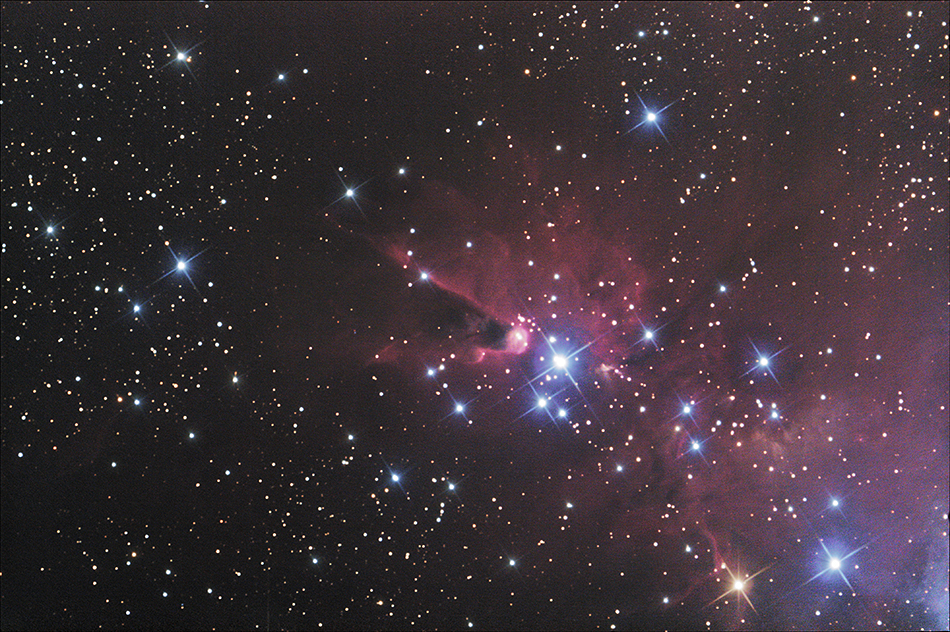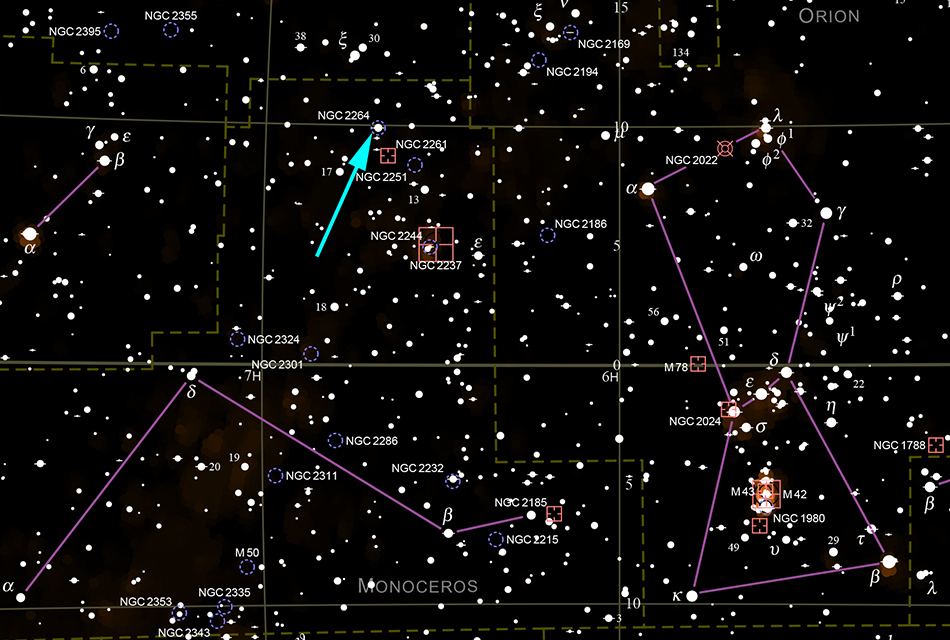

| Object name: | Constellation: | Coordinates: | Apparent size: | Visual brightness: |
|---|---|---|---|---|
| NGC 2264 | Monoceros | 06h41m / +09°53' | 40' | 4.1 mag |
The Cone Nebula and a part of the Christmas Tree Cluster NGC 2264 in the constellation Monoceros. NGC 2264 is around 2,600 light-years from Earth. The Cone Nebula is an H II region and forms part of the nebula surrounding the Christmas Tree Cluster. The cone's shape comes from a dark absorption nebula consisting of cold molecular hydrogen and dust in front of a faint emission nebula containing hydrogen ionized by S Monocerotis, the brightest star in NGC 2264 (the star is not visible in the image above). The faint nebula is approximately seven light-years long (with an apparent length of 10 arc minutes). The designation of NGC 2264 refers to the Christmas Tree Cluster, the H II region and the dark absorption nebula and was discovered by Frederick William Herschel in 1784 (source: Wikipedia).
Forty-eight 3-minute exposures (144 minutes total exposure) at ISO 800 taken on January 16 / 17, 2020 and on January 23 / 24, 2020 were added for this shot with the DeepSkyStacker software and the final image processing was done in Photoshop. The nebula is rather faint compared to the bright stars of the cluster, making it difficult to process the image.
Equipment: Canon EOS 450D Baader modified camera, TeleVue Paracorr Type II coma corrector, 16" f/4.5 "Ninja" dobsonian telescope riding on a dual-axis Tom Osypowski equatorial platform, Lacerta MGEN autoguider, Lacerta off axis system (field of view comparison: image of the moon with the same equipment).
